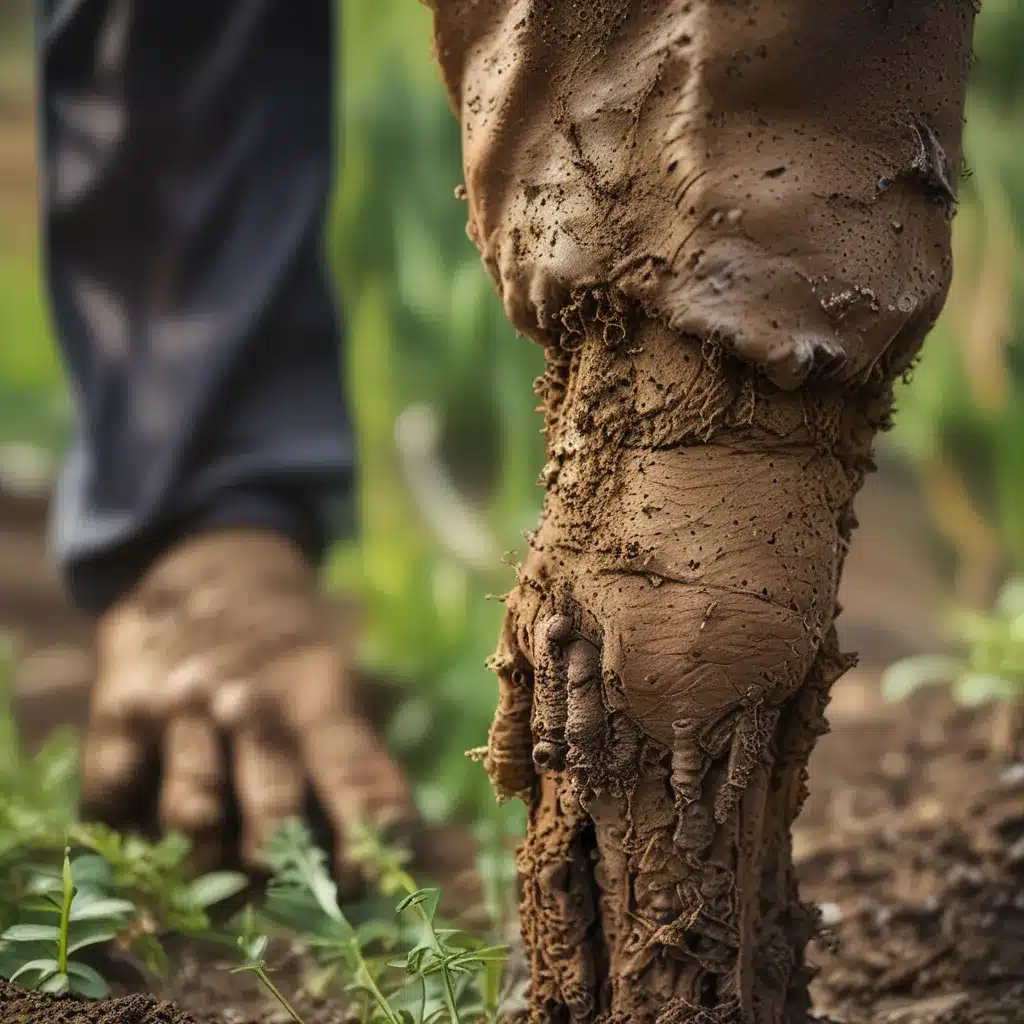
The Living Tapestry Beneath Our Feet
As I stand in the middle of Thornapple Farm, the rich, earthy scent of the soil beneath my feet instantly transports me. It’s a familiar aroma, one that evokes memories of my childhood spent roaming the fields and forests near my grandparents’ small farm. Back then, I didn’t fully appreciate the complex web of life teeming just beneath the surface – the intricate dance of microorganisms, insects, and plant roots that give life to the land. But now, as I’m tasked with sharing the secrets of healthy organic farmland, I’m in awe of the incredible resilience and vitality of this living, breathing ecosystem.
Unveiling the Soil’s Hidden Treasures
Let’s start by peeling back the layers and exploring the wonders of the soil. According to the USDA’s Natural Resources Conservation Service, healthy soil is teeming with life – from the tiniest bacteria and fungi to the larger earthworms and insects. These diverse organisms work together in a delicate balance, cycling nutrients, improving soil structure, and enhancing the overall fertility of the land.
One of the most fascinating aspects of healthy soil is its ability to self-regulate. Much like a well-functioning human body, the soil has an innate capacity to maintain equilibrium, even in the face of external stressors. As the experts at Goldhatchery Nursery explain, healthy soil is like a resilient, self-healing organism, able to adapt and thrive despite changes in moisture, temperature, or management practices.
The Symbiotic Dance of Soil Life
At the heart of this vibrant ecosystem are the microscopic heroes – the bacteria and fungi that form the foundation of the soil food web. These tiny players engage in a remarkable symbiotic relationship with the plants, exchanging nutrients and resources in a delicate dance of mutual benefit.
Picture a network of tree roots extending deep into the soil, intertwined with a vast web of fungal hyphae. The fungi, known as mycorrhizae, form an intimate partnership with the plant roots, tapping into the plant’s photosynthetic capabilities and providing it with essential nutrients like phosphorus and nitrogen in exchange for carbohydrates. This underground collaboration is nothing short of miraculous, with studies showing that up to 90% of a plant’s nutrient intake can come from these fungal allies.
But the soil’s wonders don’t stop there. Earthworms, nature’s tiny tillers, burrow through the earth, aerating the soil and leaving behind nutrient-rich casts that nourish the surrounding plants. Beetles, springtails, and other invertebrates scurry through the soil, shredding organic matter and further enriching the ecosystem.
The Fragile Balance of Soil Health
Unfortunately, the health of our soil is under threat. As the USDA’s fact sheets on soil health reveal, intensive agricultural practices, such as heavy tilling, chemical fertilizers, and pesticide use, have disrupted the delicate balance of the soil microbiome. These practices can deplete organic matter, destroy the intricate web of life, and leave the soil vulnerable to erosion, compaction, and nutrient depletion.
Imagine a vibrant tapestry, its threads carefully woven together to create a resilient, beautiful fabric. Now, picture someone recklessly tearing out those threads, leaving gaping holes and compromising the integrity of the whole. That’s what happens when we neglect the health of our soil.
Restoring the Balance: The Organic Advantage
But there is hope. The Thornappple CSA and other organic farms are leading the charge in restoring the balance and revitalizing the soil’s natural vitality. By embracing sustainable farming practices, these stewards of the land are nurturing the soil’s intricate web of life, allowing it to thrive and, in turn, providing us with nutrient-dense, flavorful produce.
One of the cornerstones of organic farming is the emphasis on building soil organic matter. This involves incorporating compost, cover crops, and other organic amendments into the soil, which not only replenishes nutrients but also feeds the diverse microbial life that is the foundation of a healthy ecosystem. As the organic matter decomposes, it releases nutrients slowly and steadily, ensuring a steady supply for the plants.
Organic farmers also minimize disturbance to the soil, often opting for no-till or reduced-till methods. This allows the soil structure to remain intact, preserving the intricate network of fungal hyphae, earthworm burrows, and other vital pathways that facilitate the flow of nutrients and water.
The Soil Sentinels: Guardians of Sustainability
As I walk through the Thornappple fields, I can’t help but feel a sense of wonder and reverence for the soil beneath my feet. These humble, unassuming sentinels are the true guardians of our agricultural sustainability, silently working to maintain the delicate balance that sustains life on our planet.
By embracing organic farming practices and honoring the health of the soil, we can unlock the secrets of this living, breathing ecosystem and ensure a thriving future for our food production and our planet. It’s a humbling realization that the key to sustainable agriculture lies not in the latest technological innovations, but in reconnecting with the ancient rhythms and resilience of the soil.
So, the next time you bite into a juicy tomato or savor the sweetness of a freshly harvested carrot, take a moment to appreciate the intricate web of life that made that nourishment possible. For in the soil beneath our feet, the true heroes of our food system are hard at work, weaving the tapestry of a sustainable future.



